The iOS 16 update is now rolling out to the masses and to say that big changes are coming with this one would be an understatement. But among all the other changes, the most attention-grabbing update has to be to the Lock Screen.
The Lock Screen has finally received the attention that has eluded it over the years. With all the new features coming its way in iOS 16, it is surely the biggest star of the year. From multiple lock screens to personalization and customization, the Lock Screen of your iPhone gets more personal and fun than ever.
What’s New in iOS 16 Lock Screen?
With all the changes that iOS 16 is boasting for the lock screen, it only makes sense to have a brief overview. So, here goes nothing.
Lock screens are now customizable from the lock screen itself, without the need to dive into the Settings app. You can also have multiple lock screens customized and ready to go. So you can switch between them in a jiffy, whenever the mood strikes. The lock screen gallery features a gamut of options for wallpapers to choose from.
Some of these, like the weather or Astronomy wallpapers, are beyond your average wallpapers. The weather wallpaper lets you see the live weather conditions as animations on your lock screen as the conditions change throughout the day. So, if it’s sunny outside, your lock screen would reflect that. But when it starts to rain, get ready to see some pouring on your screen as well. Some of the Astronomy wallpapers also have stunning animations that tie into the home screen when you unlock your phone.
It’s also one of the downsides of this feature. The home screen wallpaper is now tied to the lock screen. You can’t have a separate wallpaper from the iOS wallpapers, at least, not currently. You can only choose colors or a photo from your camera roll for the home screen if you want a different wallpaper.
iOS 16 is also introducing a new multilayered effect to photos, which puts the subject of the photo artfully in front of the time on the lock screen, creating a sense of depth. And for the first time ever, you can also edit the look of the date and time, with different font styles and colors.
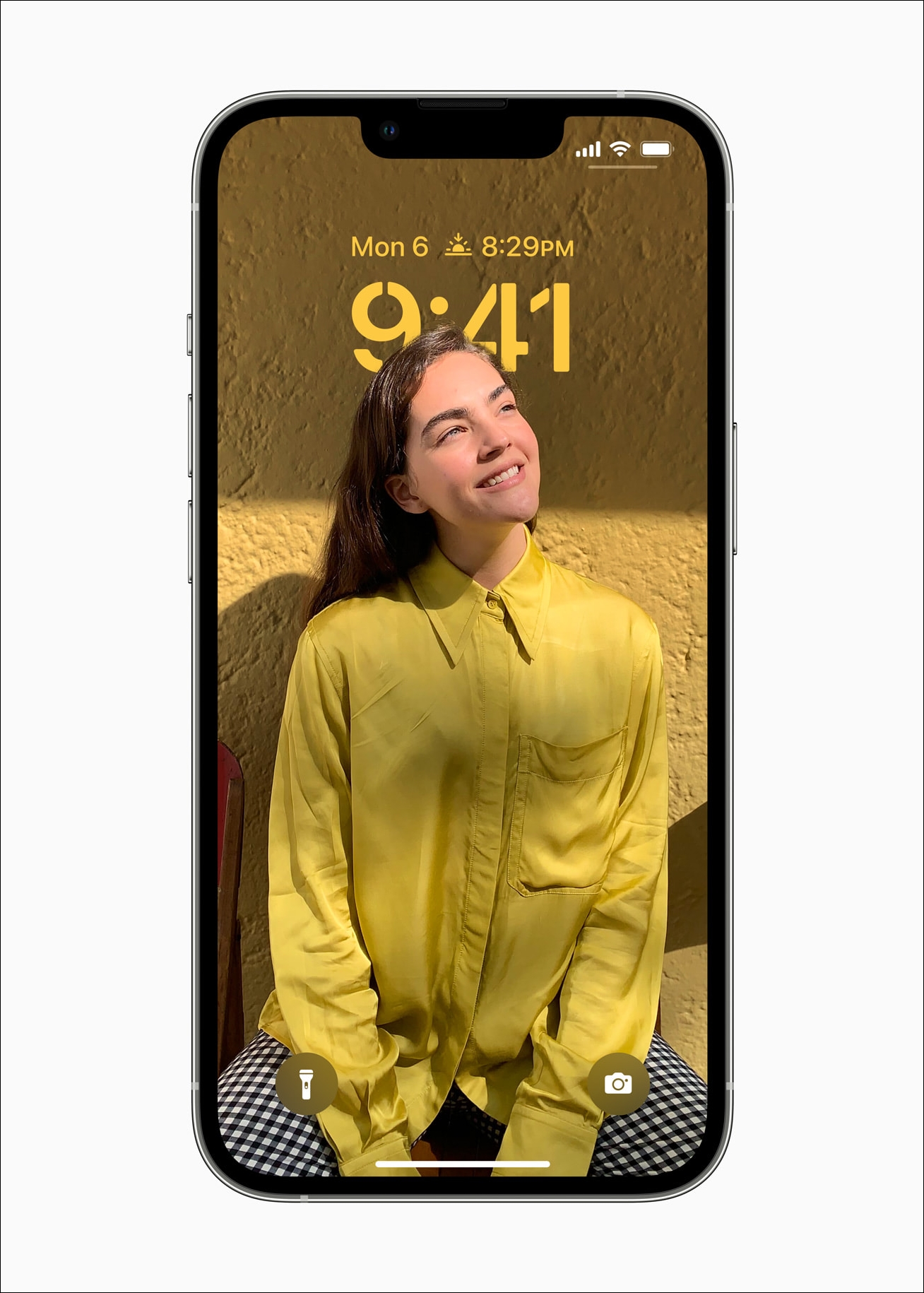
The changes aren’t purely aesthetic either; the lock screen is also getting more helpful with the addition of widgets. The lock screen widgets aren’t like the widgets for the Home screen. Instead, they take their inspiration from Apple Watch complications. So, without taking up too much real estate, they provide information at a glance from a variety of apps, such as upcoming calendar events, the weather, battery levels, alarms, time zones, Activity ring progress, and more.
The new lock screen has also shifted the notifications at the bottom where you can even completely hide them to give your wallpaper the center stage it deserves.
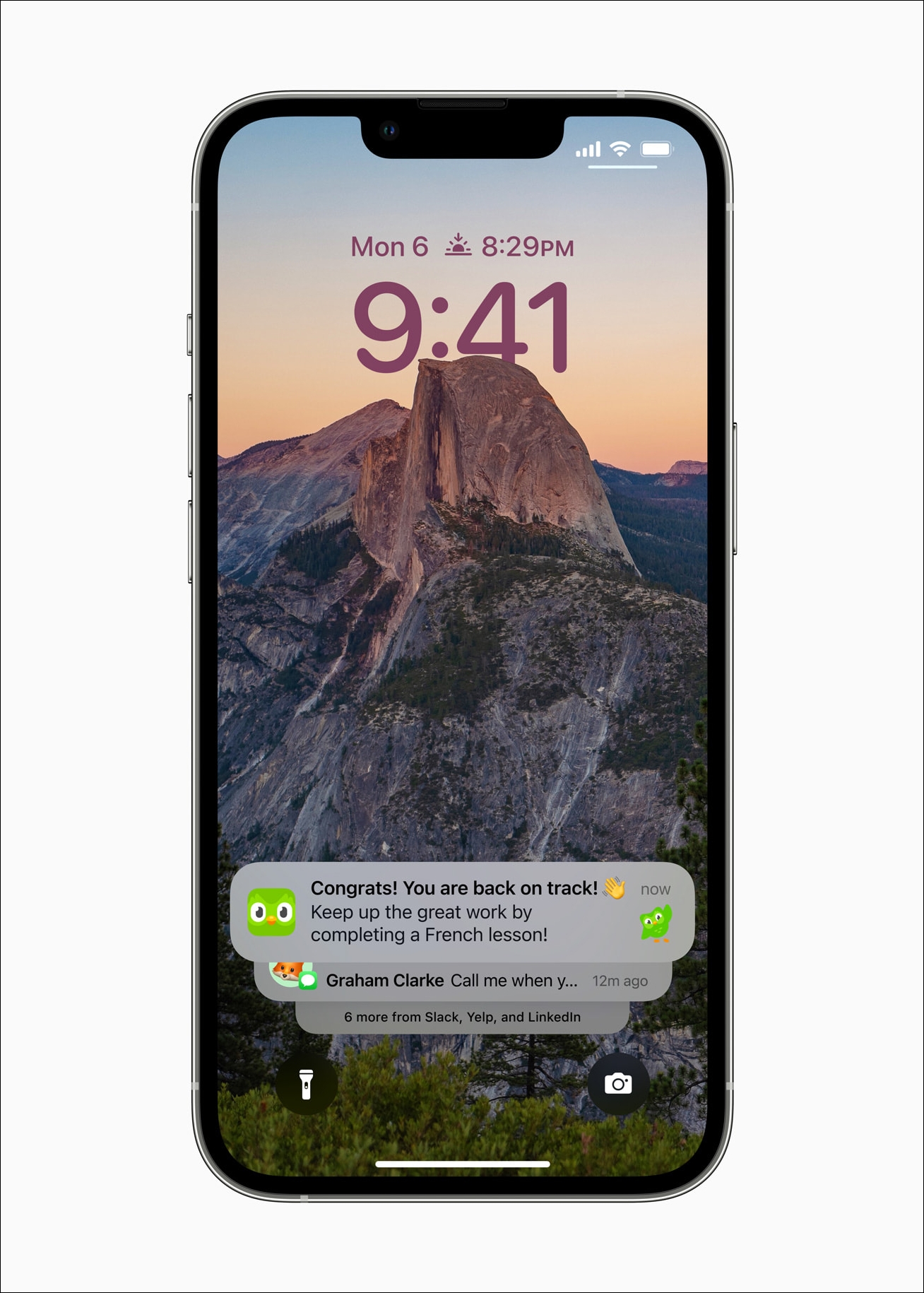
Another new addition is the Live Activities which shows things happening in real-time on the lock screen itself, such as a sports game, workout, food delivery order, etc. But it’s a feature that the app developers will have to implement for their apps.

You can also link the multiple lock screens with different Focus, so when you change the lock screen, the linked Focus is automatically implemented.
Now that you know all the wonderful changes to the lock screen, it’s time to see them in action.
How to Customize or Edit Lock Screen on iOS 16
Unlock your iPhone running iOS 16 with Face ID/ Touch ID but stay on the lock screen; don’t open the home screen yet. Then, long-tap anywhere on your current lock screen.
Tip: If you’re on the home screen already, there’s no need to lock and unlock your iPhone again. Simply swipe down from the top of the screen to open the Notification Center and long-tap on an empty part of the screen (not the notifications). You can also swipe the notifications down to hide them if they’re in your way.
The screen for customizing the lock screen will open. Since you’ll be using an old wallpaper having not customized the lock screen till now, you’ll have to add a new wallpaper to make any edits or use any of the new features.
Changing the Wallpaper
Tap the blue ‘+’ icon in the bottom-right corner to add a new wallpaper.
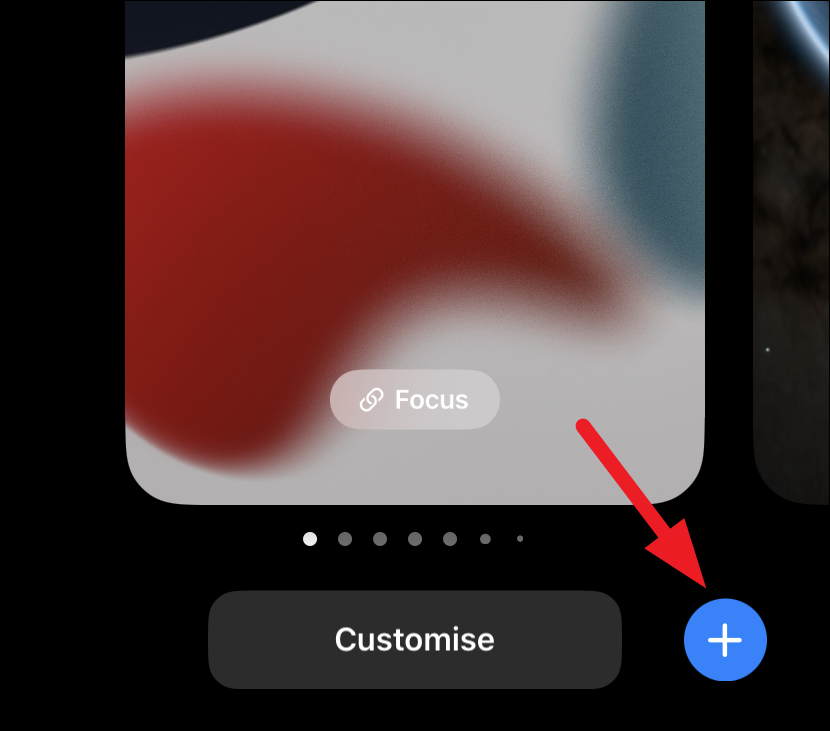
The overlay screen for adding a new wallpaper will open. It’ll have a lot of categories to choose from.
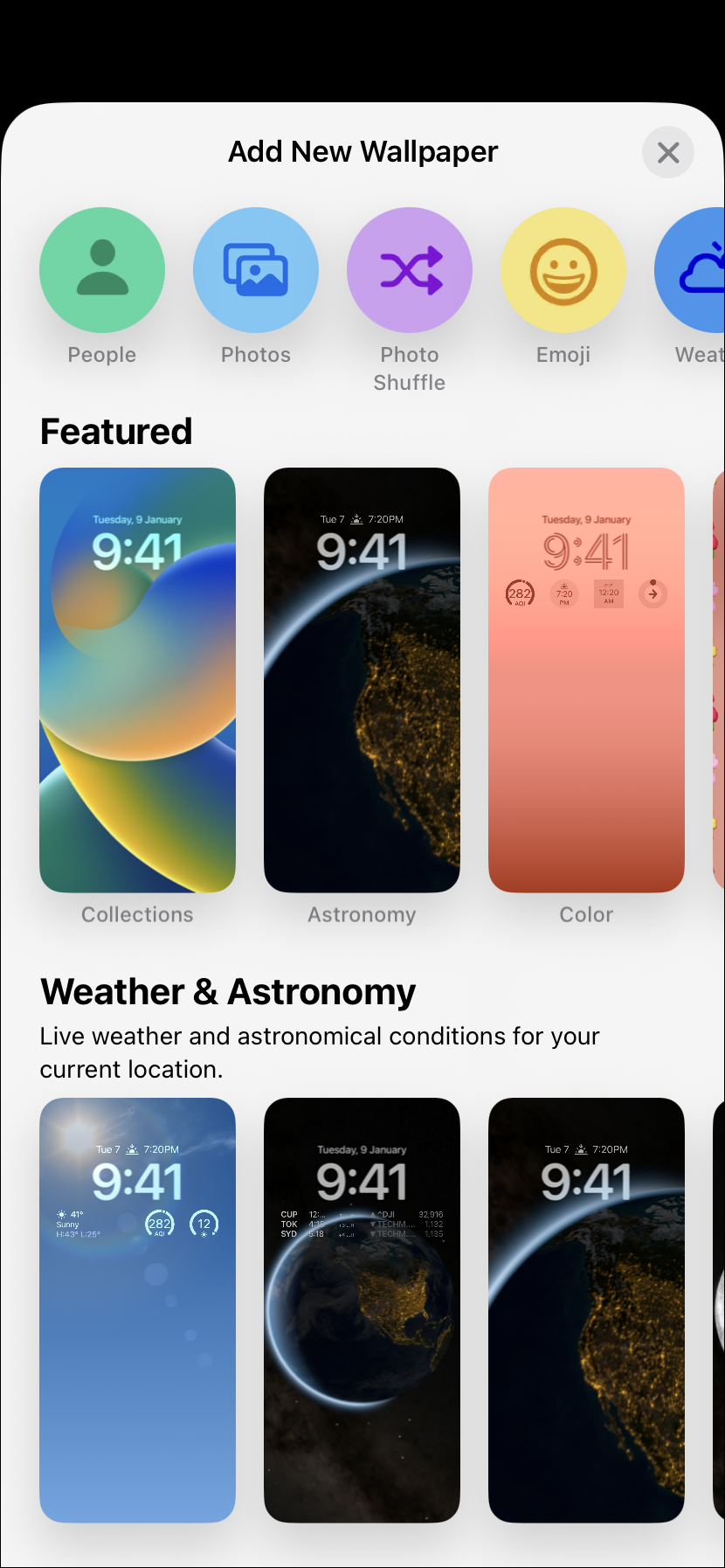
Choose a wallpaper from Featured, Weather & Astronomy, Emoji, Collections, or Color. When using Emojis, you can use the ones already available or create a wallpaper by using any combination of emojis from the emoji keyboard. You can also change the layout of the emojis to small grid, medium grid, large grid, rings, and spiral by swiping through the different styles as well as the background color. Similarly, when using a color as the wallpaper, there are a lot of effects to choose from.
To choose a wallpaper from your camera roll, tap the ‘Photos’ option. You can also apply filters to the photo by swiping to the left. To use a photo with the new multilayered effect, tap ‘People’. The photos from your camera roll that will work with this effect will appear there. There’s also another option for ‘Photo Shuffle’. Tap it to choose multiple photos from your camera roll to cycle through during the day.
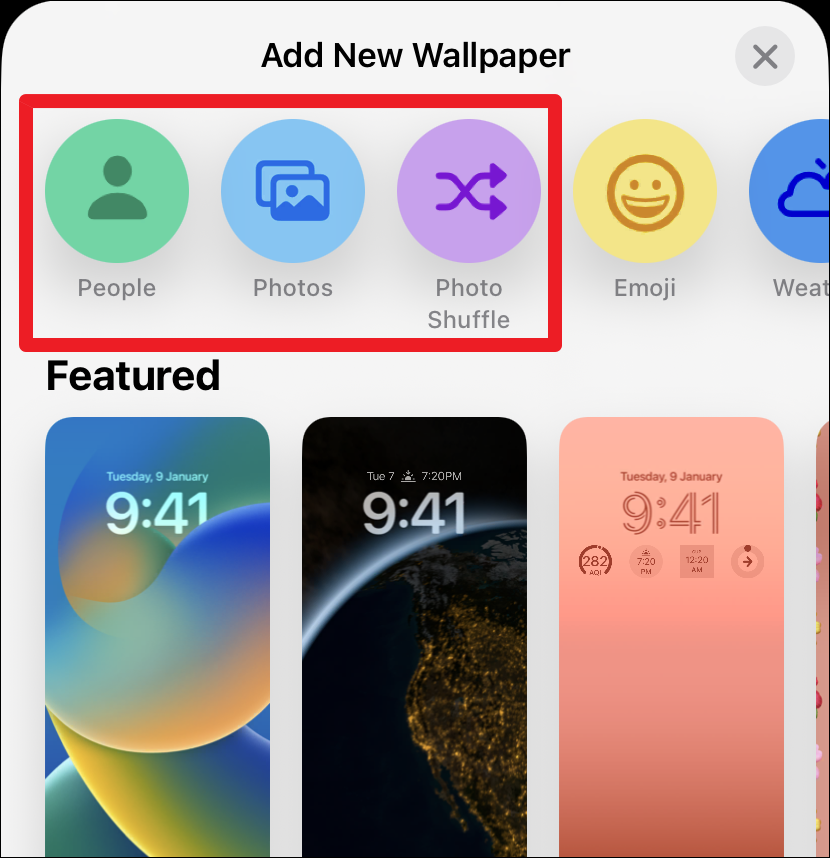
Customizing the Lock Screen
Once you’ve selected the wallpaper, you can customize the rest of the screen – date, time, and widgets. All these categories will have a boundary around them to separate them.
If you didn’t customize these when you selected the wallpaper, you can also do it later. Long-tap your lock screen to enter the editing mode. Then, tap ‘Customize’ at the bottom of the screen. The content on the screen will become editable.
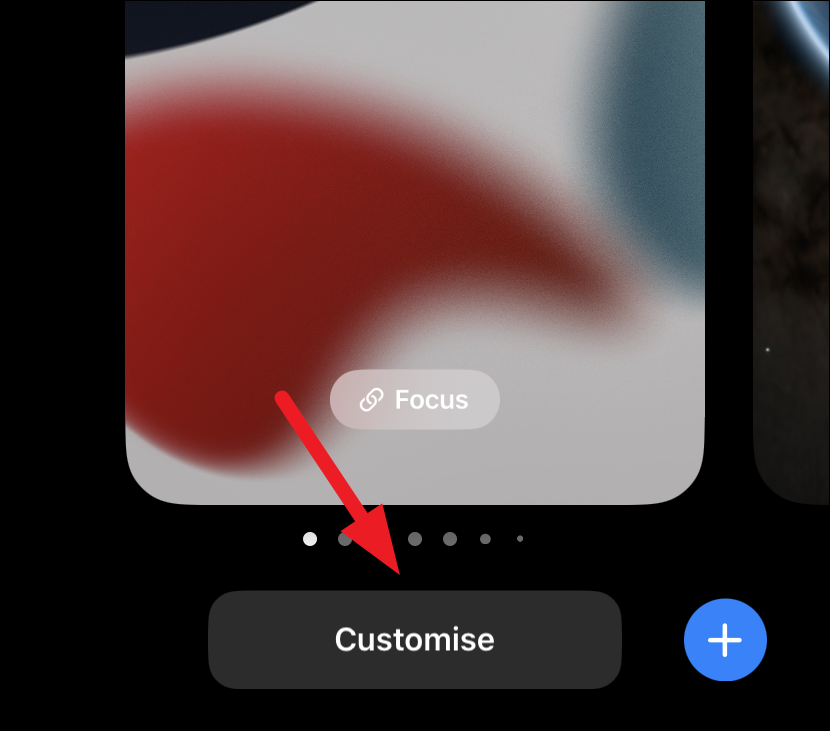
Tap the time to change the font and color.

An overlay menu will appear on the screen. Tap the number to change the font. The selected font will be highlighted with a blue boundary.
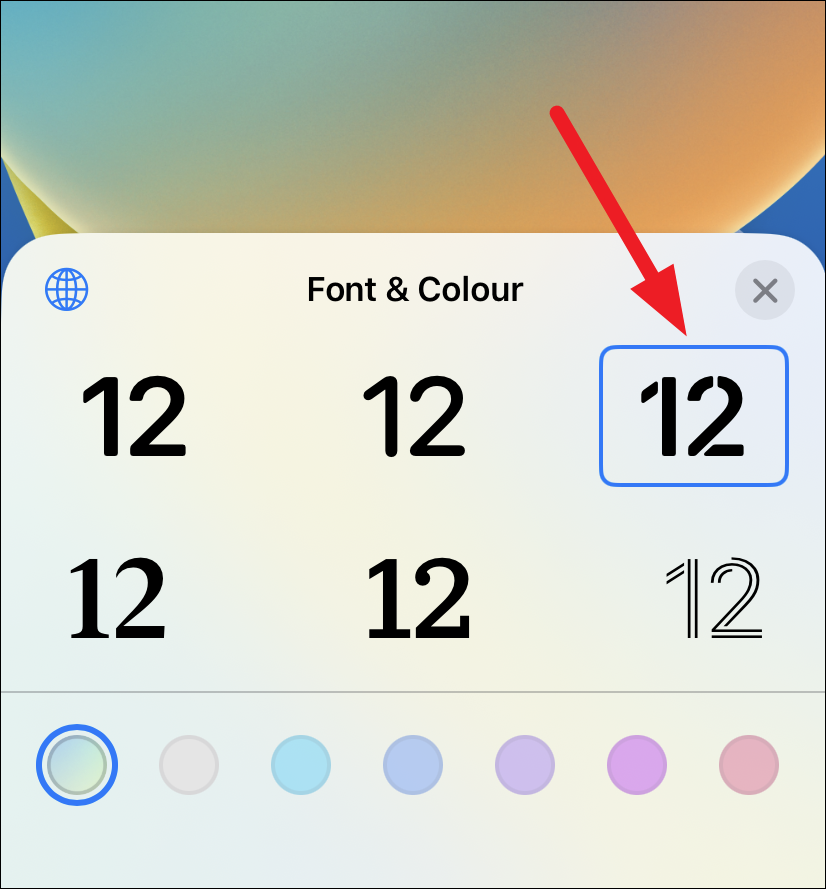
The font will only be changed for the time, and not the rest of the text (date and widgets) on the lock screen.

To change the color, swipe left or right on the colors at the bottom and select one. You can also adjust the color by swiping the slider. Or you can choose a different color than the ones at the bottom by tapping the rainbow color at the end that lets you choose a color from the grid, spectrum, slider, or color-picker.
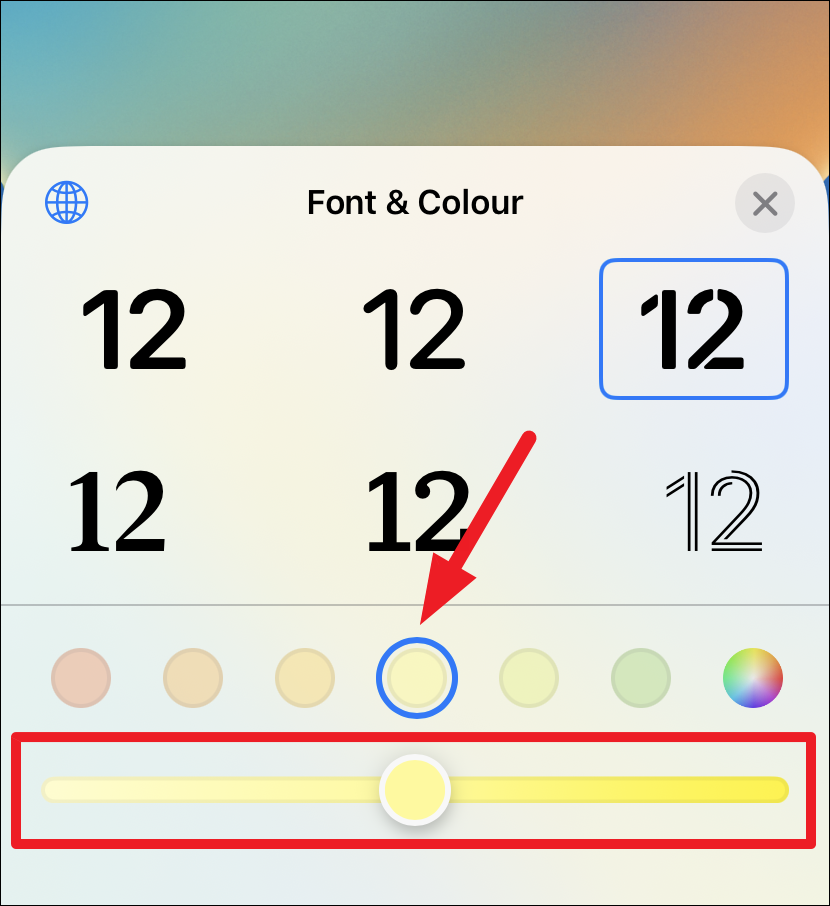
Changes in color affect date, time, and widgets.

Tap the ‘+’ icon below the time to add widgets to the lock screen. Some wallpapers, like Astronomy or weather wallpapers, also add widgets to your lock screen automatically. You can edit them and choose the widgets on your own.
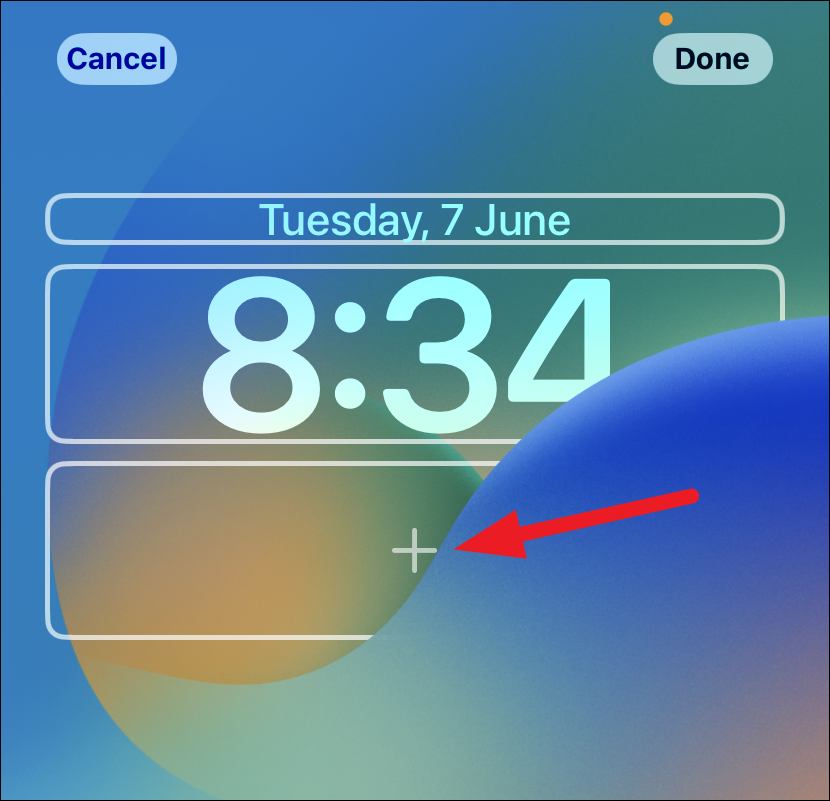
The widget screen will appear from the bottom of the screen. Adding a widget to the lock screen works much like adding it to the home screen or Today view; only the sizes are different. Either tap one of the widgets from the suggestions at the top to add it, or select the app from the list at the bottom and then select a widget from all the ones available for that particular app.

You can add 4 small widgets, 2 small and 1 big or 2 big widgets in the widget area. But you can also have only one, that is, you don’t have to fill it to the maximum capacity. Currently, the choice of widgets is also limited, but once iOS is available generally, it’s expected to increase as more developers implement the functionality for their apps.
To delete a widget, tap the ‘–’ in the top-left corner of a widget. You can only add more widgets after deleting some if there is no more space in the area.
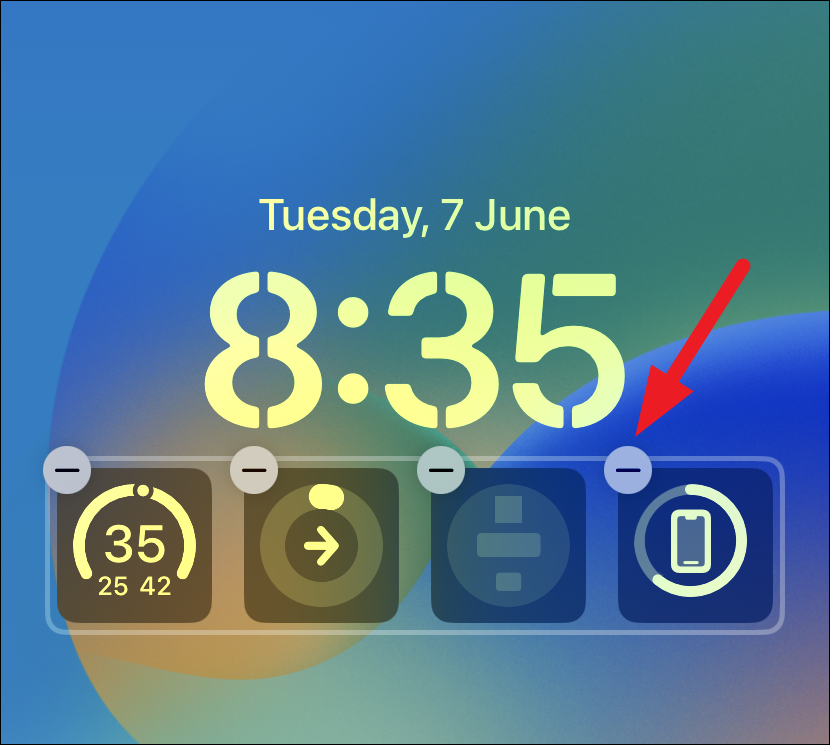
You can also add a single widget at the top, next to the date. Tap the date to edit it.
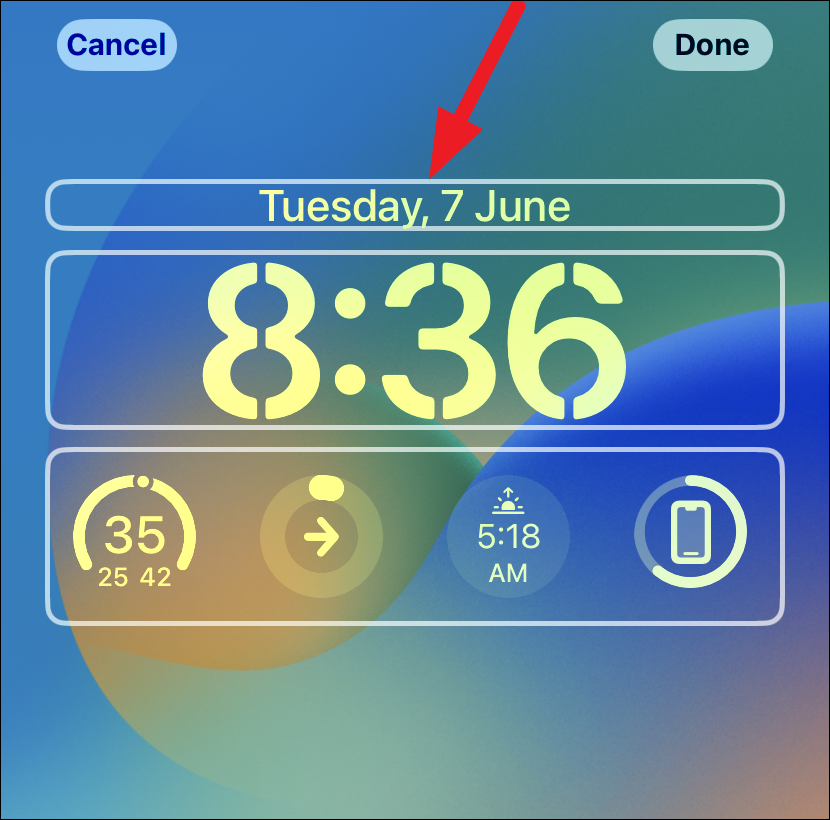
Then, select the widget you want to display next to the date from the overlay screen that appears. Unlike widgets, you cannot delete the added widget. To go back to displaying only the date at the top without any widget, select the ‘Date’ widget from the Calendar option.
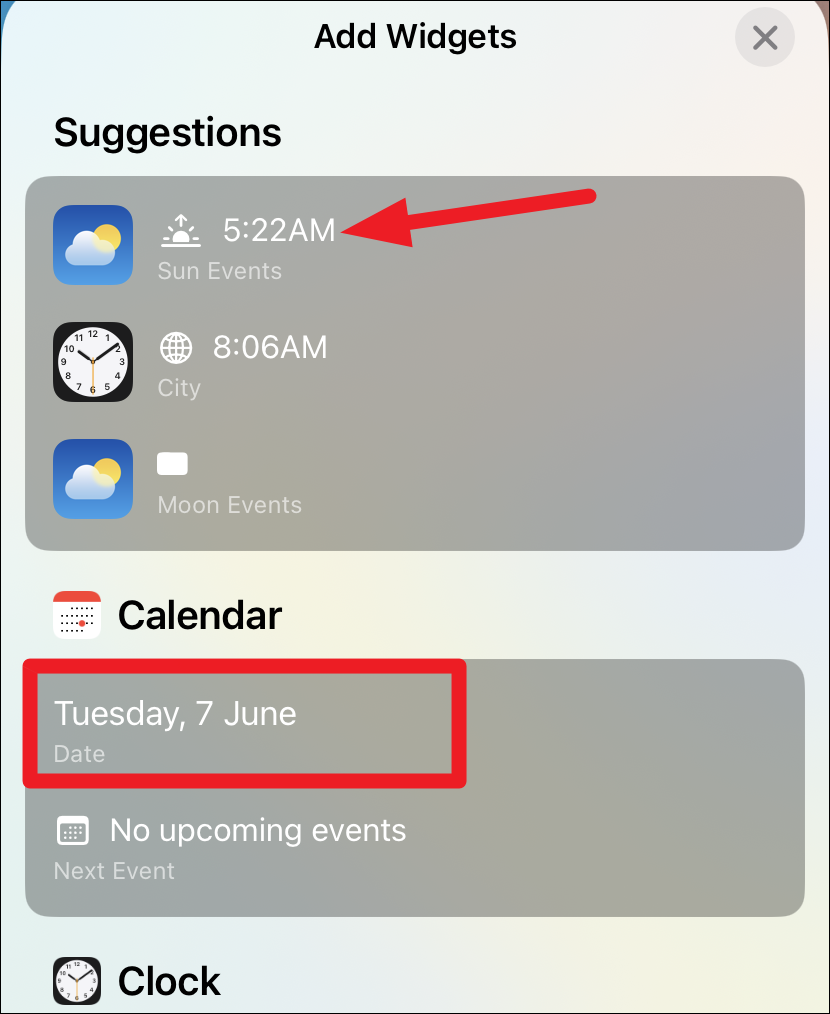
You can also disable the multilayered effect (where applicable) or enable perspective zoom for the lock screen wallpaper. Tap the ‘three-dot’ icon in the lower-right corner of the screen. Then, select the desired option from the context menu.
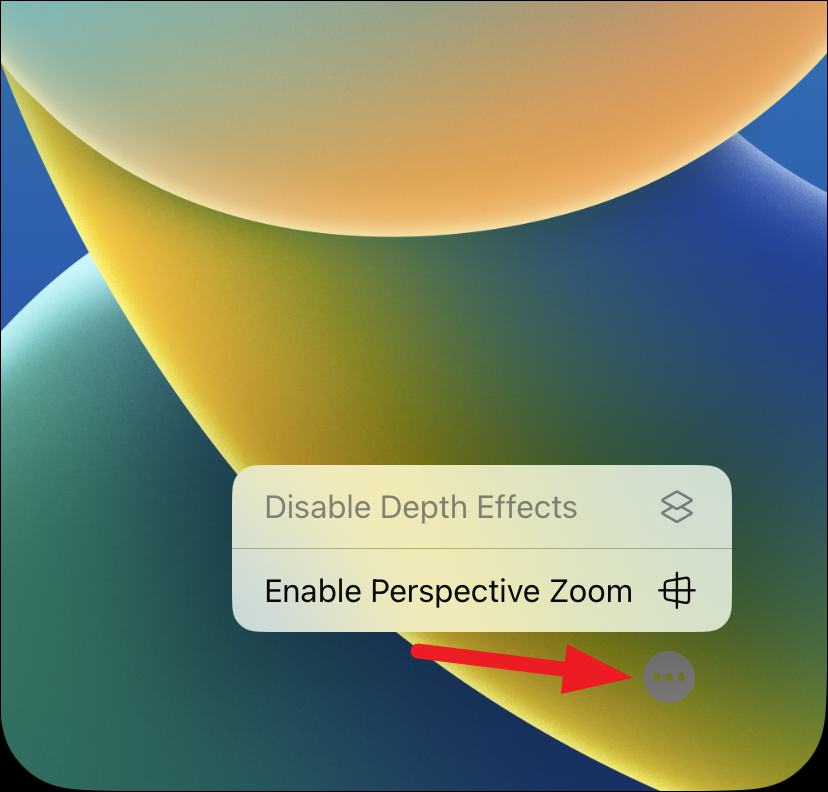
Once you’ve made all the changes, tap ‘Done’ in the upper-right corner of the screen.
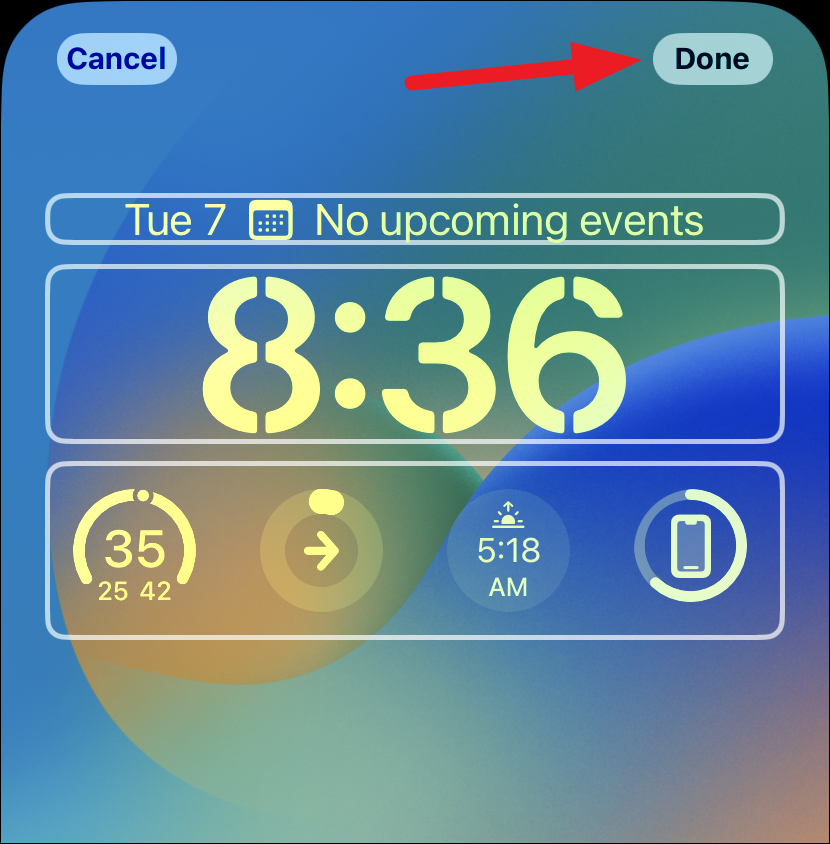
Using Multiple Lock Screens
You can create as many lock screens as you want in the same manner. Long-tap your current wallpaper to enter the editing mode. Then, tap ‘+’ to add a new lock screen to your collection and repeat the steps mentioned above to customize the new lock screen.
Now, when you have multiple lock screens, simply swipe through them to select a different one. The one you’re currently viewing will be set as your lock screen automatically.
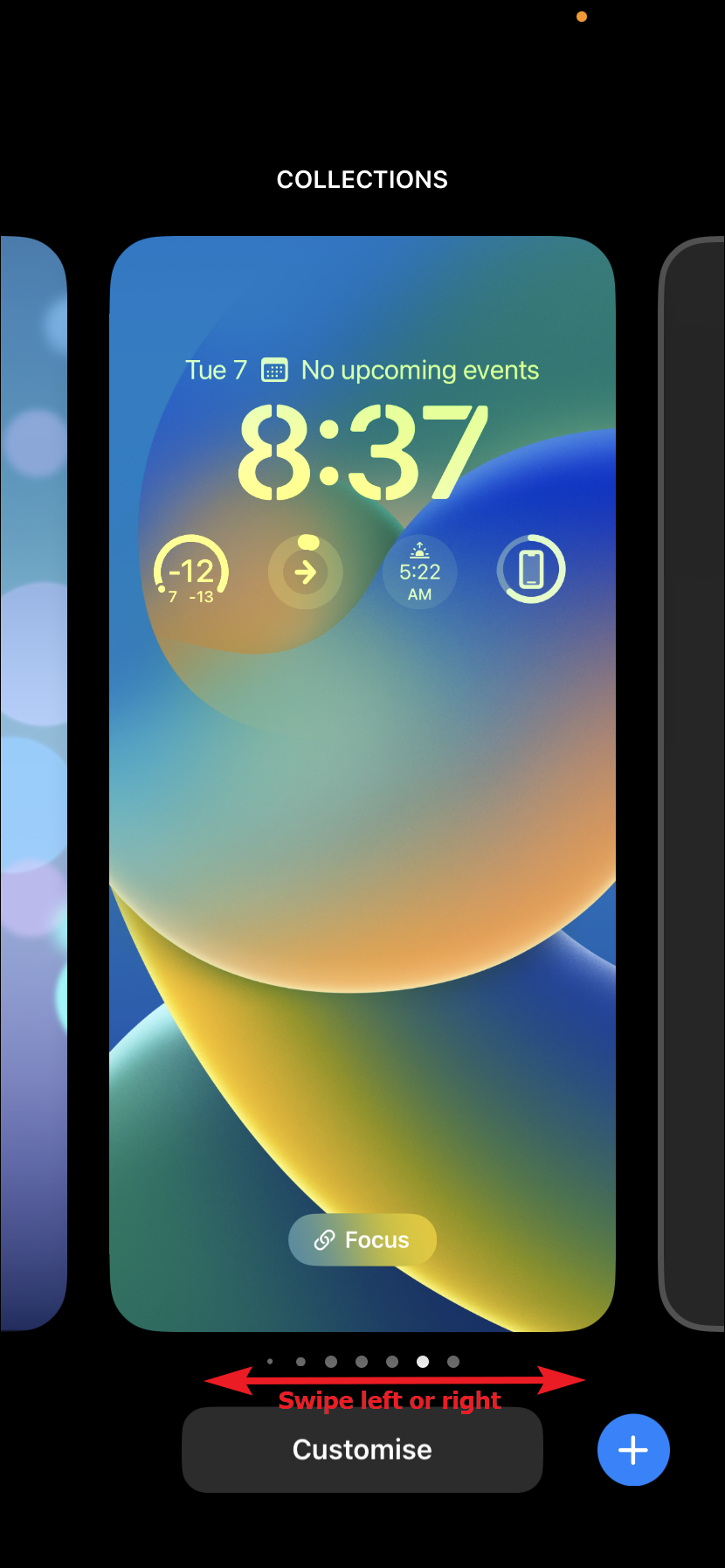
To get out of the lock screen editing mode, either tap the lock screen or swipe up from the bottom of the screen (on iPhones without a home button) or press the home button if your iPhone has one.
So far it isn’t clear how many lock screens you can have, but the limit doesn’t seem to be small, if there even is one. I’ve created about 20 lock screens till now and the option to create more is still present. So, that should be enough lock screens for you.
Linking a Focus with the Lock Screen
One of the many benefits of having multiple lock screens in iOS 16 is that you can even link a Focus with any custom lock screen. When you do that, as soon as you choose that lock screen, the associated Focus will activate. It’s a neat little option that you can use to have different lock screens for home, work, or gym by linking them to the particular focus. With just one stone (or, tap), you’ll kill two birds – change the wallpaper and activate the Focus.
To link a Focus, long-tap the lock screen. Then, swipe to the lock screen you want to link the Focus with. Tap ‘Focus’ at the bottom of the lock screen thumbnail.
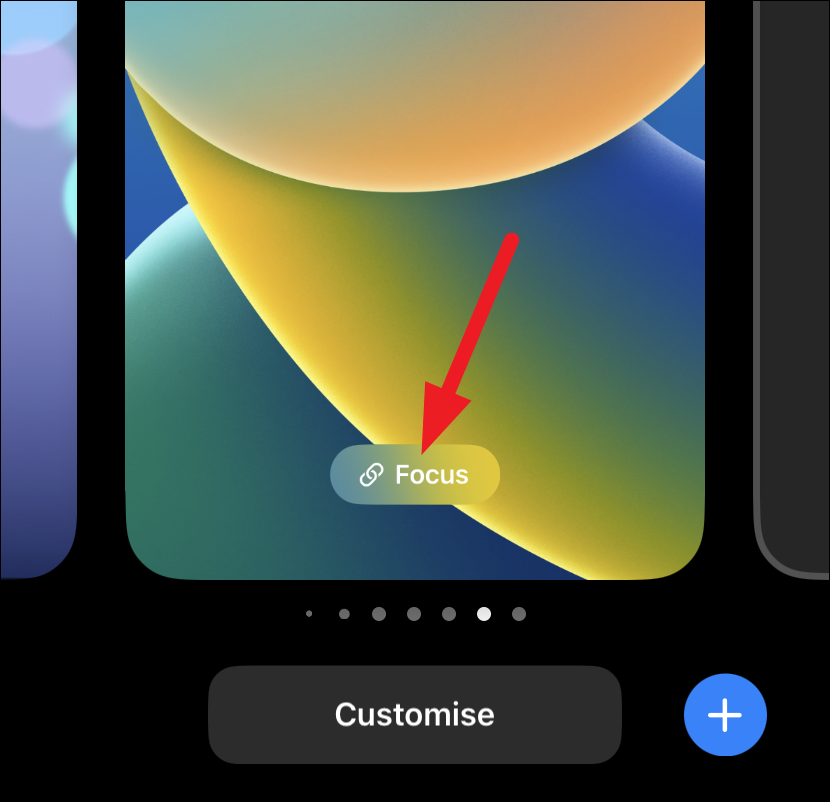
An overlay menu will appear. Select the focus you want to link with it.
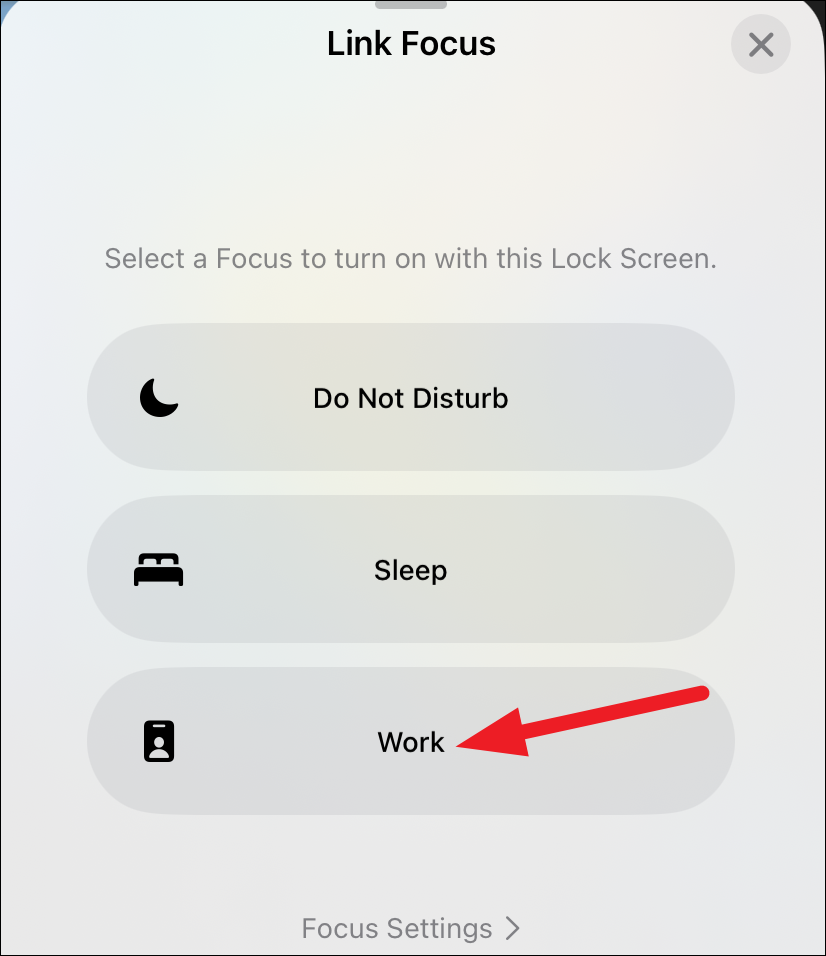
Deleting a Lock Screen
If you no longer want a certain lock screen in your collection, deleting it is easy. Long-tap the lock screen to enter the editing mode and swipe to the lock screen you want to delete.
Then, tap and hold the lock screen thumbnail itself. A ‘Delete Wallpaper’ option would appear at the bottom; tap it to delete the lock screen.

With all the changes coming to your iPhone with iOS 16, this is undoubtedly the biggest change that’ll get most people excited to get their hands on the software.

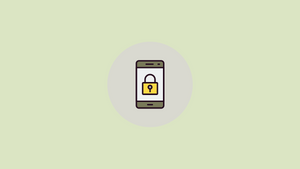




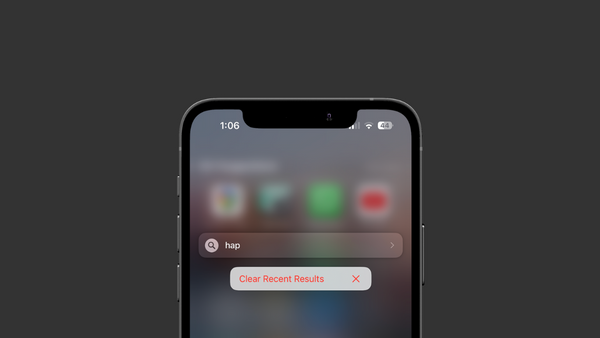

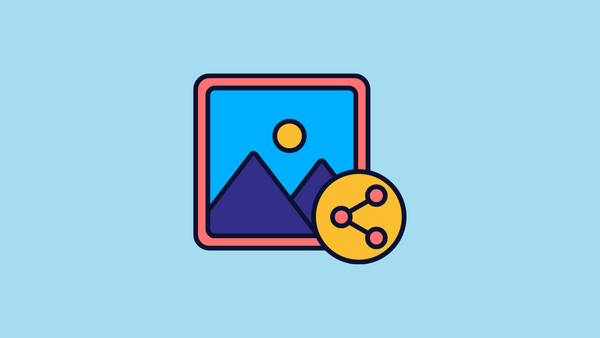
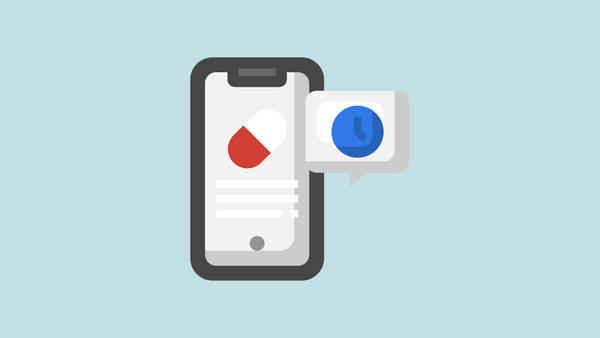
Member discussion